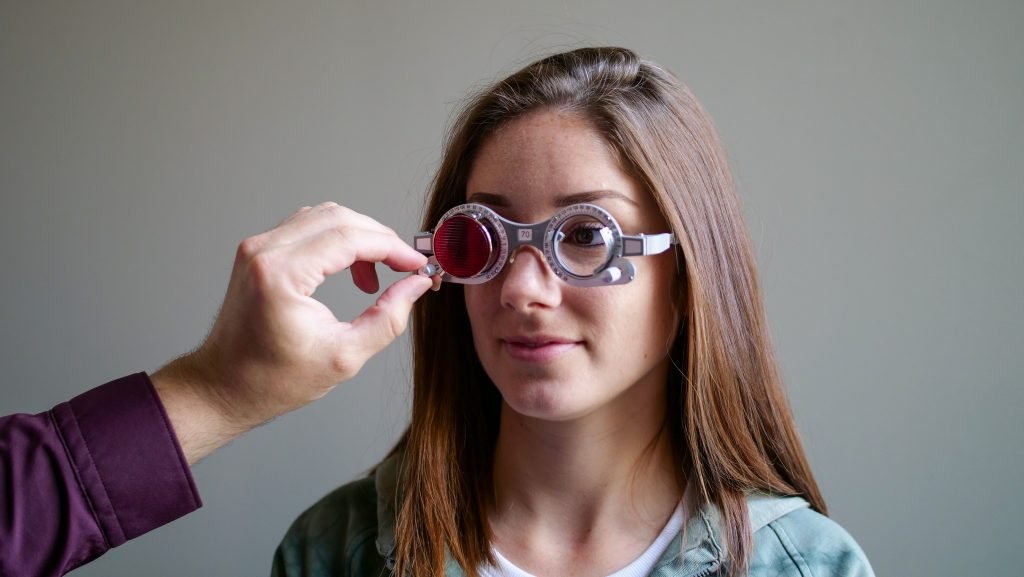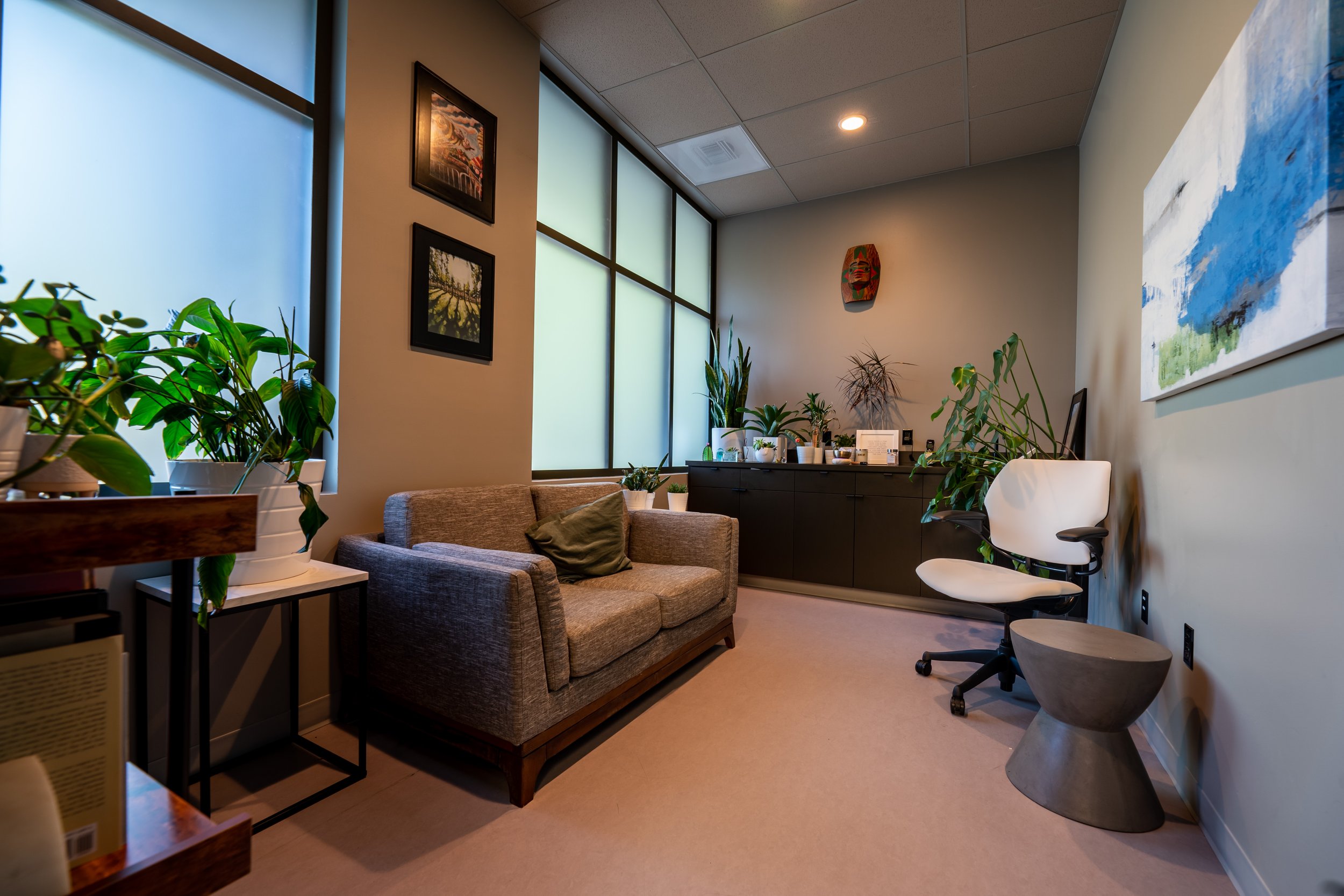
VISUAL INTEGRATION THERAPY
WHAT IS VISUAL INTEGRATION THERAPY?
Many neurological conditions involve the inability to make sense of where you are in the world. Before you can properly interact with the world, you need to be able to accurately localize yourself in space. This requires proper visual mapping to the world, and involves a number of different types of eye movements. Visual reflexes and voluntary eye movements are frequently impaired in neurological conditions. Rehabilitation of these different types of eye movements and visual reflexes is often the key to resolving your neurological issues and getting you back to living your best life. Visual integration therapy is thus a crucial component of your NeuroRescue Program.
HOW DOES VISUAL INTEGRATION THERAPY HELP ME?
There are several different classes of eye movements that are critical for us to be able to make sense of the visual environment. The foundation of all of these is gaze stabilization, the ability to hold the eyes still on a target. Beyond this, there are four basic types of eye movements: saccades, smooth pursuit movements, vergence movements, and vestibulo-ocular movements. Saccades are fast jumps from target to target. We use saccades to create our visual map of the world and to localize objects within the visual surround. Smooth pursuits are ocular following reflexes, and involve being able to lock the eyes on a moving target.
Vergence movements involve moving the eyes independent of each other, involving convergence where the eyes move towards each other, and divergence where they move apart. These are critical to maintain focus on targets as they move towards and away from us. Vestibulo-ocular movements involve reflexively moving the eyes in response to a head movement. These are critical for maintaining gaze stabilization, and allow us to have clear vision while the head is moved and as we move through the world.
It is extremely common for these different classes of eye movements to become impaired in a wide range of neurological conditions. Rehabilitation of these eye movements and their integration with other neurological reflexes can be a critical step in restoring neurological function in these conditions. We find impaired eye movements in a host of neurological conditions, including:
Concussions and Traumatic Brain Injuries | Dizziness and Vertigo | Headaches and Migraines | Neurodegenerative Disorders | Chronic Pain | Movement Disorders | Neurodevelopmental Disorders | Dysautonomia | Strokes and Vascular Disorders | Peripheral Nervous System Disorders | Mental Health Conditions
WHAT TO EXPECT:
Visual integration therapy involves performing very precise and specific eye exercises to help resolve your symptoms. These may include looking at targets that move on screens, or tracking moving targets with a head mounted laser. They may involve performing specific head movements while attempting to keep your eyes fixed on a target, or performing exercises designed to work only a single eye muscle at a time. You may be performing eye exercises while balancing on an unstable surface, while lying on a tilt table, standing on a vibrating plate, in a virtual reality environment, or even while experiencing whole body rotation in our Gyrostim device. Every case we work with is different, and so is every visual integration therapy protocol.
Visual integration therapy is different than traditional vision therapy, in that it is designed to reintegrate your visual pathways with other parts of your nervous system. Our exercises are not just designed to make your eyes better. Your specific exercises will be designed to make your eyes work well with your inner ear, your neck, your back, your ankles, your hands, your cerebellum, your parietal lobe, your frontal lobe, your limbic system, and all points in between.
FAQs
-
Yes. Visual integration therapy is extremely safe. Different eye movements are controlled by different parts of the brain, and visual integration therapy is designed to challenge these parts of the brain directly. When these parts of the brain start to fatigue, we can usually see a breakdown in your eye movements before the involved brain regions become fatigued to the point where they begin to provoke any symptoms. Your therapist will be carefully observing your eye movements for signs of fatigue during every exercise, and will always stop your exercises at the appropriate moment.
-
The visual integration exercises you will perform are different in every case. Your exercises will be prescribed based on the data from your neurodiagnostic testing, and will be unique to your specific presentation. They usually involve some form of gaze stabilization exercise, which involves fixating your eyes on a specific target or series of targets as you move your head at a prescribed speed. They may involve pursuing targets moving on a screen while the visual background is stationary or moving. They may involve performing saccades to targets in specific directions, or anti-saccades in the opposite direction of targets as they appear. They may involve vergence exercises where you perform an eye movement as you are translated to or away from a target. They may involve optokinetic stimulation, a specific form of ocular following reflex where you look at stripes or other targets moving in particular directions.
As these are visual integration exercises, your specific tasks often involve integrating more than one type of eye movement at the same time. Often the key to helping your brain learn to properly perform an eye movement is coupling it with another type of movement. The patterns of eye movement coupling that help facilitate your recovery will be determined based on your neurodiagnostic testing data, and we analyze your data with the goal of revealing these coupling patterns.
As you begin to recover your function and improve at your exercises, we progress by integrating your exercises with other types of stimulation. We will usually combine your eye exercises with vestibular challenges, photobiomodulation, targeted electrical neuromodulation, and specific physical exercises as you progress through your NeuroRescue Program.
-
To use traumatic brain injury as an example, TBI survivors often seek vision therapy to help them address problems with visual focus, double vision, light sensitivity, headaches and fatigue during reading. This is often very helpful. However, the visual symptoms that develop from traumatic brain injuries are very commonly not problems with the eyes themselves. They are instead the result of neurological injuries, and need to be treated as such to be properly and thoroughly addressed.
Some of the most common problems seen in brain injuries involve the ability to move the eyes quickly, smoothly, accurately, and in unison. Even more fundamentally, one of the most basic functions that is commonly damaged is the ability to hold the eyes still. These problems are not based on damage to the eyes. They are problems with the neurological systems and pathways that move the eyes.
A failure to activate a particular eye muscle properly during a movement can be a problem with the muscle itself, a problem with the nerve driving the muscle, or more commonly, a problem with one or more of the many different neurological reflexes that activate the nerve. These can involve inputs from different parts of the inner ear, several different parts of the brainstem, the frontal lobe, the parietal lobe, and many other parts of the brain. All of these different regions and reflexes will create different versions of the same problem, and all of them need to be rehabilitated differently for maximum effect.
The comprehensive neurological examination and neurodiagnostics involved in the NeuroRescue Program allow us to determine exactly which parts of the system need to be rehabilitated, both prior to and during eye movement therapy. This allows us to have much faster gains through therapy, and resolve issues that do not respond well or fully to traditional vision therapy.
In cases where vision therapy remains necessary, we refer to and work with the best vision therapy professionals in our community to combine our therapies for maximum benefit. We find that traditional vision therapy progresses much faster after completing your NeuroRescue Program.
-
No. Not at all.
LET’S GET YOU BACK TO LIVING YOUR BEST LIFE
“The improvements were amazing for me to see. They were very obvious on the charts as well as for my own pain. I’ve never gone this long without a migraine.”

-
We use advanced neurodiagnostic technologies and cutting edge neurorehabilitation strategies that are unique to your brain and condition.
-
We use high frequency treatment over 5-10 days, to bring you maximum results in the shortest time possible.
